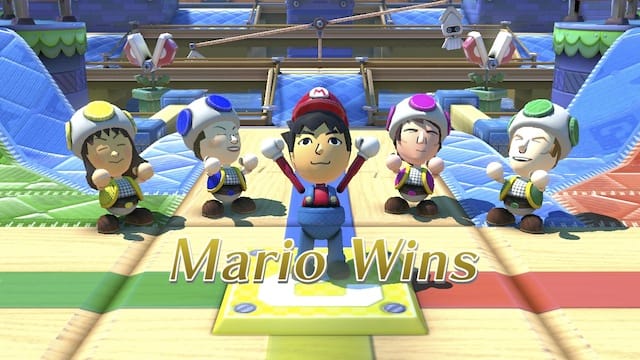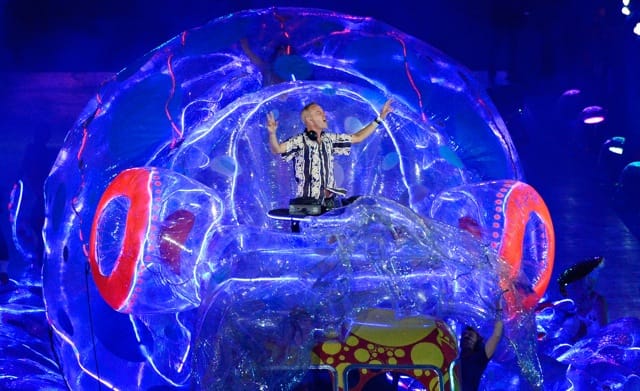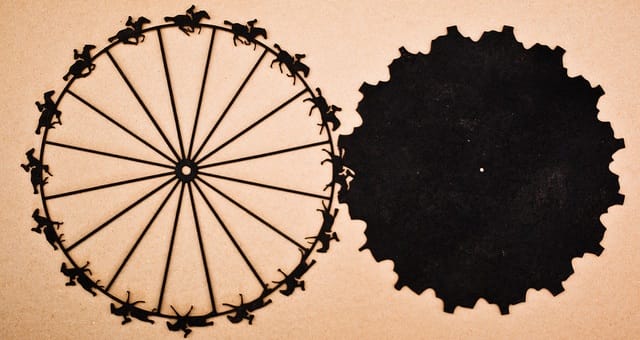I Can’t Play Without My Radio

For lots of people I knew in 10th grade, getting your actual driver’s license was a letdown after Grand Theft Auto. Just a few hours devoted to Rockstar Games’ enveloping amorality simulator and the rules of real civilization felt rigid. If you played this game before you’d ever really driven a car—ignoring lights, lanes, dividers, and pedestrians; never touching the brake; firing bursts of ammunition out the windows—you started to anticipate a whole new life: unrecognizably cool, totally irresponsible, and imminent. Not having to actually go inside Dairy Queen anymore was an undeniable advance, but it didn’t cut it, not when you couldn’t go over 25 downtown. Although in retrospect it wasn’t just the absence of the GTA universe’s lenient attitude towards reckless driving, property appropriation, and cop killing that crippled the real world. It was that there usually wasn’t as much good stuff on the radio.
Because that was really the point of Grand Theft Auto. Yes, it mattered that in GTA: Vice City—the one set in a parody of ’80s Miami, where you wore Sonny Crockett jackets and had Tony Montana priorities—you could steal someone’s car, drive it across town at around 100 mph, spray Uzi fire out the window at rival gang members, crash into one of the responding cop cars and abandon the wreck to sprint down a back alley and lose the police in the downtown rush; but on some cold and self-loving reptilian level, more aroused by crime movies than by crime, it mattered more that while you were doing this you could listen to Gary Numan’s “Cars.” Or “Kids in America.” These both came on the in-game radio a lot when I played Vice City; they were songs I didn’t switch away from, just like you’d have in your real car if you still listened to the radio in there. If you were like me you spent most of your time tuned to the synthpop-heavy WAVE 103; but, as in reality, you had to make regular sweeps of the dial to make sure “The Message” or “Juicy Fruit” or Toto’s “Africa” wasn’t happening somewhere—especially “Africa,” with all those slow, soaring, doe-eyed synths that gave your breakneck nihilism an epic dignity and a sick smirk.
Grand Theft Auto really was, at bottom, a hollow and blackhearted game. Discarding as hysterical the legislative belief that killing cartoon cops nudges you toward killing real ones, we should still be cautious about immersing ourselves for too long in a game whose major selling point is that it frees you from empathy. But the radio stations were beautiful. It wasn’t just that the songs were a good soundtrack; it was that they were on the radio—they’d stop when you got out of the car, and you’d just hear waves and traffic and gunfire before you’d hurl yourself into a different car and the middle of Michael Jackson’s “Wanna Be Startin’ Somethin’.” There were parody commercials, but they were kind of juvenile and tedious, so you’d change the station when they came on, just like in real life. In a game based on the unfettered and fantastic indulgence of the id, that was why the radio was important: it made you act like you did in real life. The world you were exploring was deceptively vacant—most doors didn’t open, and most people didn’t speak. But with the radio, it felt like a real place: the kind of place where you could get distracted trying to tune into Blondie and drive into a tree.
In Vice City and its golden-age-of-gangsta sequel, San Andreas, radio stations don’t just provide the score, they provide atmosphere: vivid, period-appropriate, and dorm-room cool. They do the same in recent installments of the revived Fallout series, in which the post-apocalyptic Earth of the classic 2D role-playing games is reimagined in 3D by Bethesda, the maker of the sprawling, diffuse, obsessively detailed Elder Scrolls role-playing games. Here the future looks as it did to a pessimist circa 1962: savage tribes and tenuous communities cling to life in the ruins of an atom-powered and atom-destroyed American empire. Everyone’s either in animal skins or scavenged ’50s businesswear. Someone somewhere’s gotten a broadcast tower working, so while you wander the wastes shotgunning mutated wildlife you can listen to Billie Holiday and the Andrews Sisters. In between songs, DJs read the news; since we play videogames in part to pretend we do lots of newsworthy things, most of the news is about you.
The designers don’t use radio so differently to color in their worlds than you use it to color in yours. Exciting as the games are, they’re not all that far from life.
As postapocalyptic life’s more fraught and visceral than Cole Porter, the stations’ playlists lay the irony on thick, and they suffer from a thin repertoire. Eventually, even happy accidents—say, sending an irradiated zombie’s head spiralling across the desert in slow motion while Dean Martin croons “Ain’t That a Kick In the Head”—cease to tickle. But like the GTA stations, the radio broadcasts in the Fallout games do more than score your adventures: they furnish and populate the universes you’re exploring. Music does this so well because of its matchless power to allude: a few seconds of a song in the background of a game can communicate not only mood and tone but volumes of history and association. Songs place Vice City in a specific era; they place Fallout in another era’s nightmares. And in both games, the radio connects your experiences, draws assortments of incident together into stories. GTA‘s radio—with its interruptions, its petty frustrations, its obnoxious commercials—gives continuity, rhythm, and mundane timing to evenings spent screeching around corners, tumbling out of drivers’-side doors, and sprinting away from exploding cars. Fallout‘s radio feeds you the news—a stream of reminders about what you’ve done and what you might want to do next, the sound of the gameworld acknowledging your presence—and, through the pre-rock pop it plays, the atomic generation’s curdled hopes haunt the game like sad, sarcastic ghosts.
Tonally, these two series share nothing. Besides the device of the radio, the games share only the ambition to immerse players in large and detailed worlds—and the glitchy imperfections that bubble up when that ambition fails. But the designers don’t use radio so differently to color in their worlds than you use it to color in yours. Exciting as the games are, they’re not all that far from life. You wander around and bump into things. You go into a store and buy an outfit. Someone asks you to do something neither as fun nor as interesting as wandering around bumping into things, but you do it anyway because it pays. If there were no pop songs playing there might be a whiff of futility.
This is a danger less freeform games don’t face. Mario’s never needed period pop to bind together his adventures, or situate them historically: Princess Peach is to the right of where he is, and left is where he came from. So he runs right, to 8-bit tunes that became permanent cultural phenomena because they used an impossibly limited palette to express everything they needed to: energy, whimsy, urgency, menace. Games that use real pop songs are after more detailed associations. And the ones that assemble their songs into actual fictional radio stations—the ones that want narrative, not just mood—share a dream of gaming as a medium more detailed and mimetic than any other, one where nothing, not even the radio dial, is too small to touch. Deeper and broader than the Mushroom Kingdom, the worlds of these games invariably buckle and crack, begin to repeat themselves, show their seams, under the immense strain of pretense. Vast and promising on first glance, full of greed to dazzle, capable of intense and sprawling greatness, and ultimately shallower than they pretend, they likely need radio stations for the same reasons we do.



